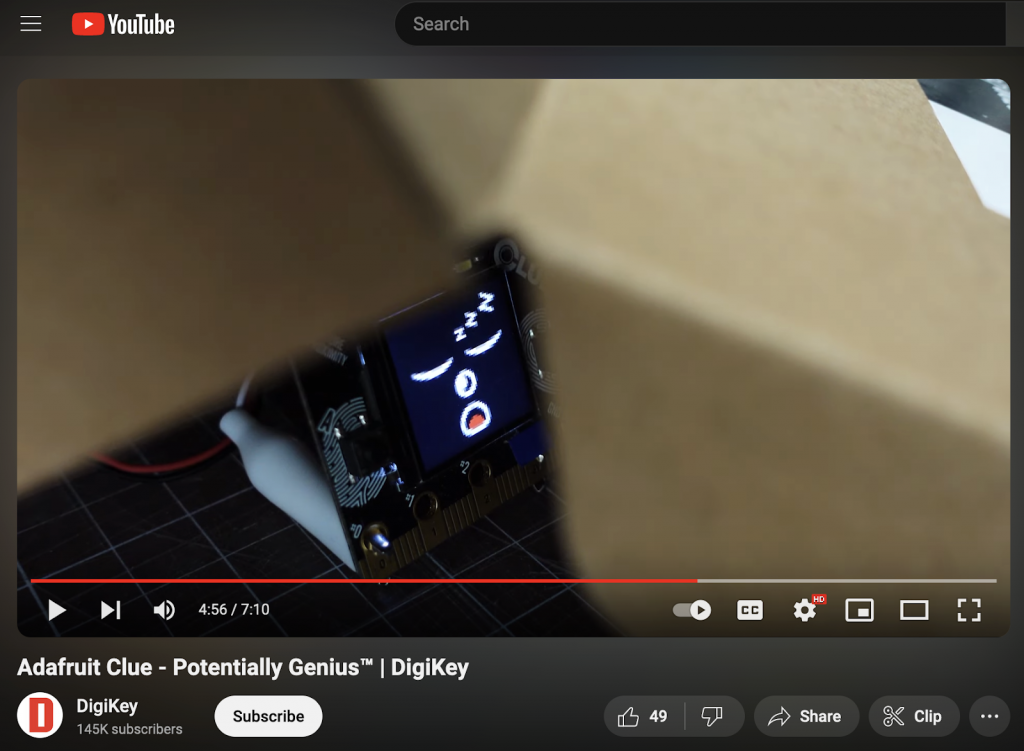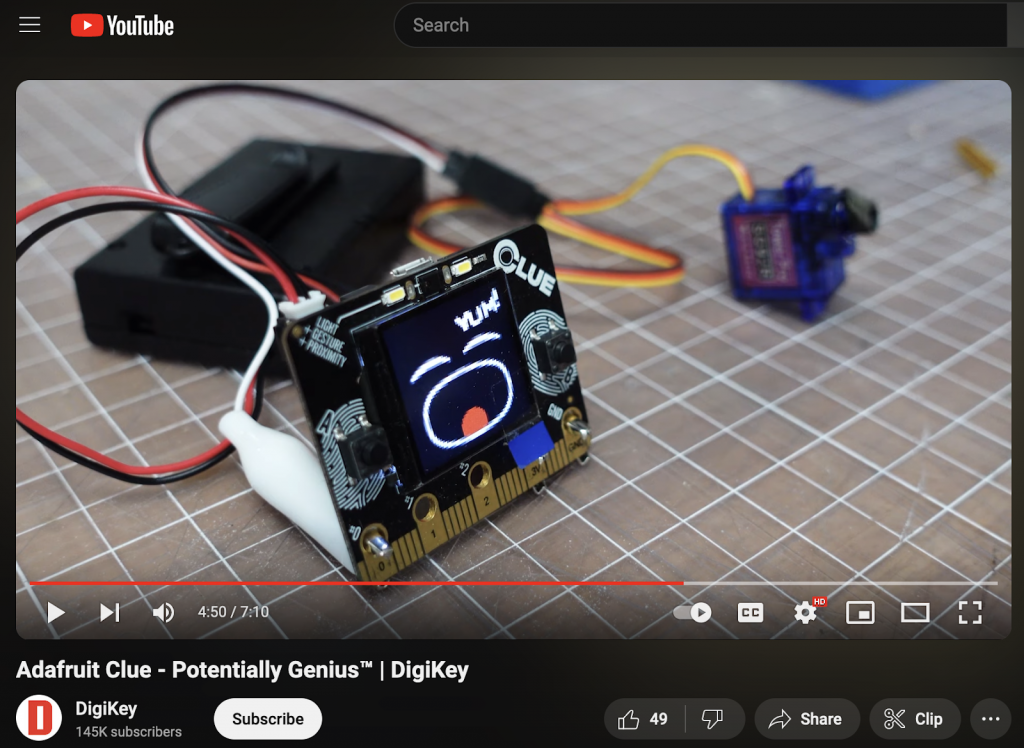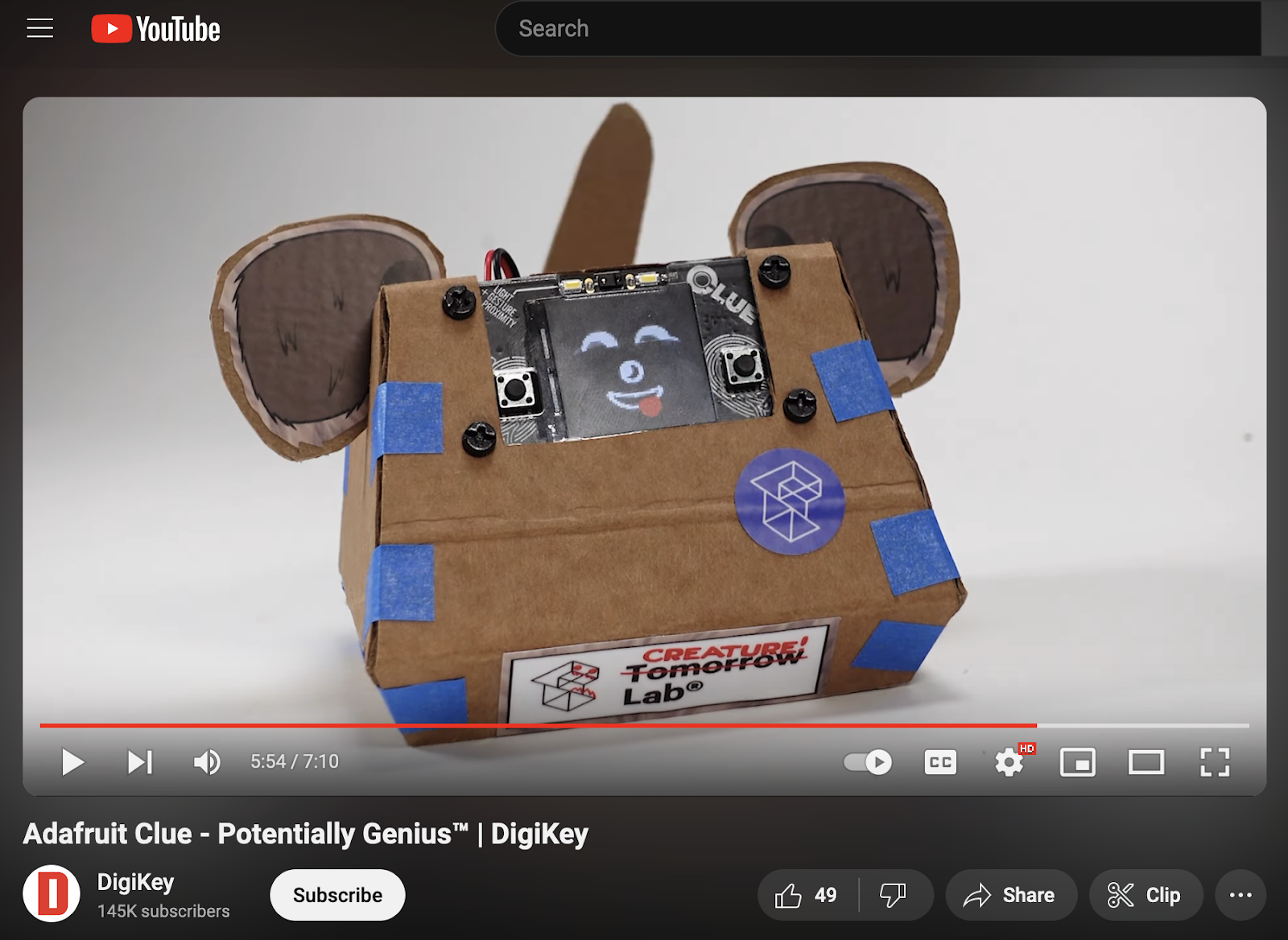Introduction
Another episode of Potentially Genius has dropped! We are thrilled to share that this episode features fellow YouTuber John Park, of John Park’s Workshop as our guest. John is certainly not your typical YouTuber, as he is considered a legendary maker, and has had stints at Sony Imageworks, Disney Animation Studios, and was the host of the Emmy nominated American Public Television series Make: Television. He currently works with our friends at Adafruit Industries on product development and education – how very cool!
As a reminder, our YouTube series, sponsored by DigiKey, a top electronics components distributor, is in its third season and just getting started! We often find ourselves on DigiKey’s website daily – browsing their massive library of components in order to find just the right item for inspiration, testing and to refine our design choices. Potentially Genius allows us to showcase our creativity and provide inspiring content that empowers viewers to embark on new projects!
John asked us to create a “potentially genius” something using the brand new Adafruit CLUE Kit! (at the time of this publication, this item is currently sold out – but you can sign up for the waiting list!)
What is the Adafruit CLUE Kit…and what can you do with it?
The brand new Adafruit CLUE Kit is a sensor-packed development board (or microcontroller platform) with a small front screen. On the item’s description page, Adafruit lists out all the special features that lay within – a few of our favorites are the Nordic nRF52840 Bluetooth LE processor, 1.3 inch 240×240 Color IPS TFT display (for high resolution text & graphics), 2MB internal flash storage, a buzzer/speaker, the list of sensors (even humidity!) and of course the fact that it is programmable with Arduino IDE or CircuitPython. It also comes with a microserver motor which the user can control the angle of and a cute acrylic case!
When the end user receives the kit, all parts and components are separated out and arrive in a fun cardboard box. John further narrowed the project brief to use the components in the CLUE kit to create a “companion pet” that is both a construction from cardboard and other materials users may have on hand, as well as react to its environment and show different emotions on the CLUE screen when interacting with the user.
One of our fearless leaders, Pepin, chimed that this will be a “Powered Pet Platform!”
Firstly, the team group chatted about all the different sensors available in the kit and which ones they wanted to use and highlight. Proximity sensors will be used for the kit to turn on/off and color sensors will be used for the kit to recognize “food.” Jingyao, Tomorrow Lab’s electrical engineering intern at the time, came up with the great idea of creating custom colored stickers for the user to “feed” their pet. 😆
Henry, one of Tomorrow Lab’s industrial designers, graphic designed all the faces that would appear on the screen, as well as all the stickers! Henry then moved on to unboxing the CLUE kit and then started designing the housing that will surround the module and any other components.
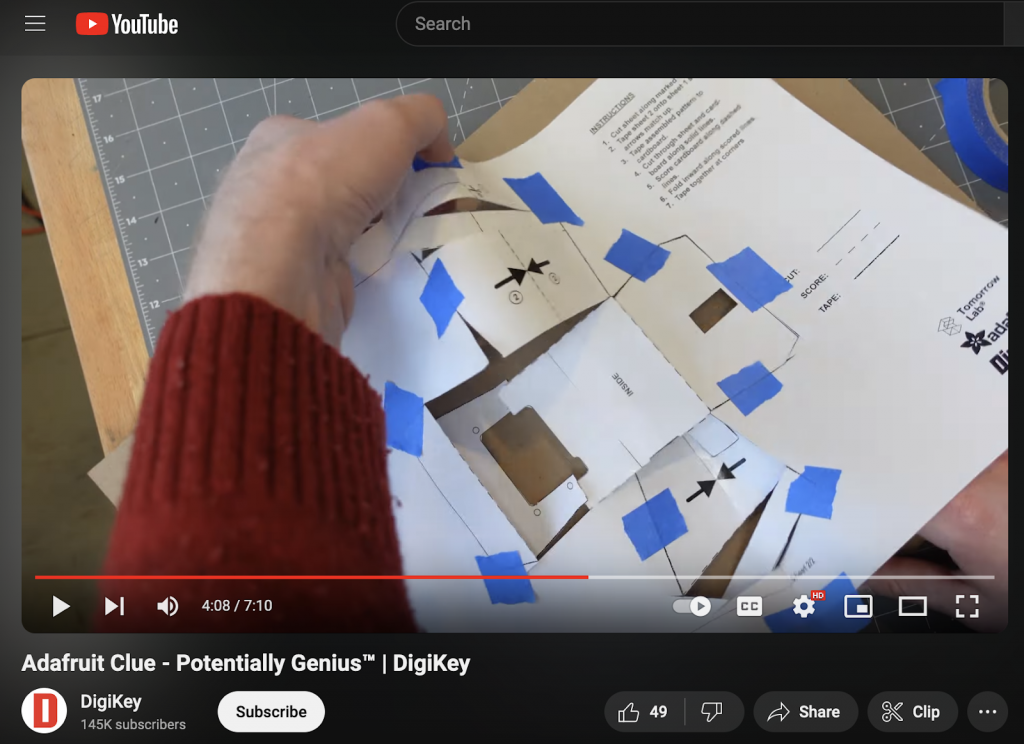
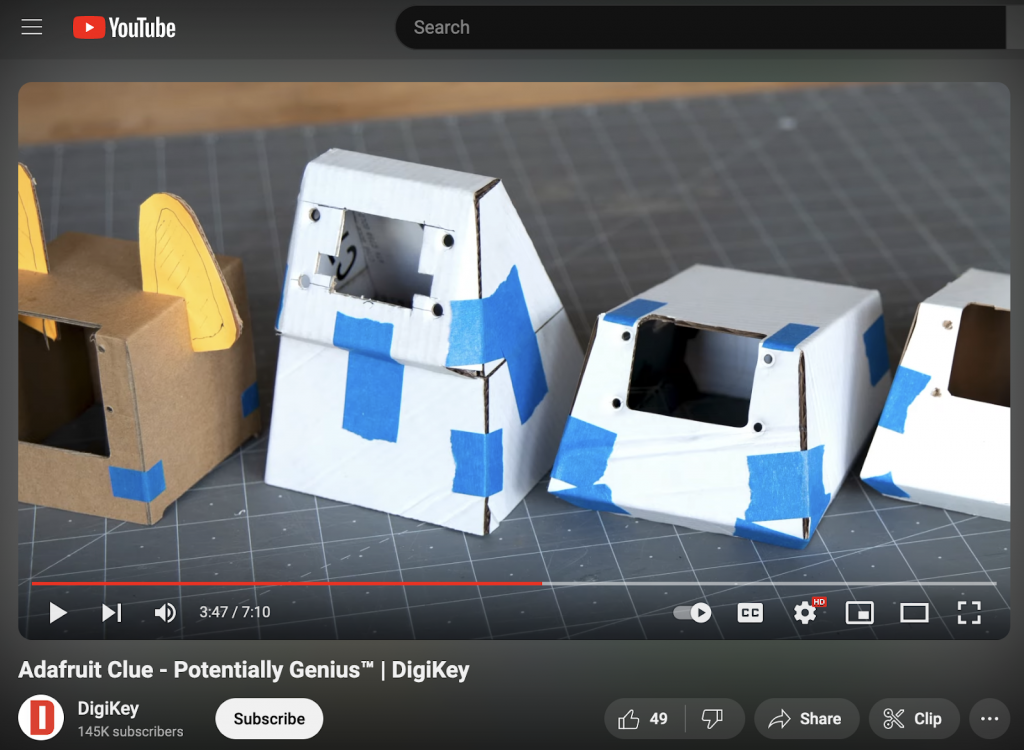
Our other fearless leader, Ted, explained that we gave ourselves a design constraint for the housing of 8.5×11 inches, which allows us to share at home printable patterns, as well as even use the shipping box it came in! Ted goes on to explain that “the firmware functions link it all together – which makes it feel like a creature who has come alive!”
Jason, one of Tomorrow Lab’s electrical engineers, along with Jingyao go over some of the electronics highlights. Jingyao commented that as a first time CircuitPython user, she found it very easy to navigate using the Adafruit tutorial (yay!). Jason walks us through the design decisions made for the different emotions displayed on the screen, as well as the tail wagging function using the servomotor.
Pepin led the final presentation to John of “Creature Lab,” our decided name for our CLUE kit creation. Pepin explained that we sought out to connect the different sensors to different behaviors and facial expressions, customize the CLUE into a pet shape, developed stickers for customization, and finally on the electronics front developed a “Pet OS” from all the inputs and outputs to bring it all to life! John sounded pleased indeed! We hope our viewers are pleased as well and are inspired to create their very own CLUE Pet!
